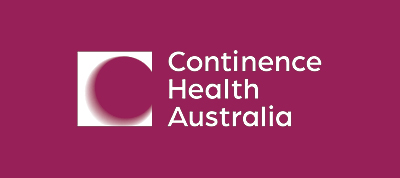Physiotherapy pessary providers in Australia: results of a multidisciplinary survey of practice
Patricia B. Neumann A * , Katrina McEvoy B , Hannah Moger B , Melissa Harris B , Olivia Wright B , Irena Nurkic B , Judith Thompson B and Rebekah Das AA
B
Abstract
Physiotherapists have recently become involved in the management of women with prolapse by providing pessary care as well as pelvic floor muscle training and lifestyle advice. There are little data internationally about physiotherapists providing pessaries and only one Australian study to date reporting on a multidisciplinary survey of pessary providers, which indicated large numbers of physiotherapists involved in pessary management.
The aim of this study was to report specifically on further details of physiotherapy pessary practice from this survey.
An anonymous 24-item electronic survey was developed and sent to all known healthcare pessary providers in Australia between 26 June and 31 August 2022. The survey contained both multiple choice and text answer questions, divided into four sections: clinician demographics, pessary management training, current practices and future training needs. Responses were analysed using descriptive statistics and key variables reported using frequencies (numbers and percentages).
We report comprehensive data on the 324 physiotherapy respondents, who were distributed across all states and territories and in all regions of Australia except in very remote regions. Physiotherapists had 1–15 years’ experience in pessary management, were predominantly employed in private practice, with variable training, and no universal requirement to demonstrate competence. They used a wide range of pessaries, fitted a median of three pessaries per month and all taught pessary self-management.
Physiotherapists are widely distributed across Australia providing local pessary management for women with prolapse. There is a need for national training standards to ensure physiotherapists deliver safe, best-practice pessary care.
Keywords: competency, conservative management, mentoring, multidisciplinary, pelvic health physiotherapist, pelvic organ prolapse, physiotherapy, self-management, scope of practice, survey, training, vaginal support pessary.
References
1 Gorti M, Hudelist G, Simons A. Evaluation of vaginal pessary management: a UK-based survey. J Obstet Gynaecol 2009; 29(2): 129-31.
| Crossref | Google Scholar |
2 Dwyer L, Stewart E, Rajai A. A service evaluation to determine where and who delivers pessary care in the UK. Int Urogynecol J 2021; 32: 1001-6.
| Crossref | Google Scholar |
3 Hanson L-AM, Schulz JA, Flood CG, Cooley B, Tam F. Vaginal pessaries in managing women with pelvic organ prolapse and urinary incontinence: patient characteristics and factors contributing to success. Int Urogynecol J 2006; 17: 155-9.
| Crossref | Google Scholar |
4 O’Dell K, Atnip S, Hooper G, Leung K. Pessary practices of nurse-providers in the United States. Urogynecology 2016; 22(4): 261-6.
| Crossref | Google Scholar |
5 Bugge C, Hagen S, Thakar R. Vaginal pessaries for pelvic organ prolapse and urinary incontinence: a multiprofessional survey of practice. Int Urogynecol J 2013; 24: 1017-24.
| Crossref | Google Scholar |
6 Brown CA, Pradhan A, Pandeva I. Current trends in pessary management of vaginal prolapse: a multidisciplinary survey of UK practice. Int Urogynecol J 2021; 32: 1015-22.
| Crossref | Google Scholar |
7 Pizzoferrato A-C, Nyangoh-Timoh K, Martin-Lasnel M, Fauvet R, de Tayrac R, Villot A. Vaginal pessary for pelvic organ prolapse: a French multidisciplinary survey. J Womens Health 2022; 31(6): 870-7.
| Crossref | Google Scholar |
8 Newman S, Rantell A. A specialist service evaluation: a cross-sectional survey approach. B J Nurs 2023; 32(12): 570-8.
| Crossref | Google Scholar |
9 Australian Bureau of Statistics. Population aged over 85 to double in the next 25 years. Canberra: ABS; 2018. Available at https://www.abs.gov.au/articles/population-aged-over-85-double-next-25-years [cited 7 December 2024]
10 National Institute of Health and Care Excellence (NICE). Urinary incontinence and pelvic organ prolapse in women: management; 2019. Available at https://www.nice.org.uk/guidance/ng123 [Last updated 24 June 2019, cited 5 December 2024]
11 Goode K, Beaumont T, Kumar S. Timing is everything: an audit of process and outcomes from a pilot advanced scope physiotherapy model of care for women with pelvic floor conditions. Clinical Audit 2019; 2019: 1-10.
| Crossref | Google Scholar |
12 Nucifora J, Howard Z, Weir KA. Do patients discharged from the physiotherapy-led pelvic health clinic re-present to the urogynaecology service? Int Urogynecol J 2022; 33: 689-95.
| Crossref | Google Scholar |
13 Beaumont T, Tian E, Kumar S. “It’s messing with my physical health. It’s messing with my sex life”: women’s perspectives about, and impact of, pelvic health issues whilst awaiting specialist care. Int Urogynecol J 2022; 33(9): 2463-70.
| Crossref | Google Scholar |
14 Australian Institute of Health and Welfare. Rural and remote health. Canberra: Australian Institute of Health and Welfare; 2024. Available at https://www.aihw.gov.au/reports/rural-remote-australians/rural-and-remote-health [cited 7 December 2024]
15 McEvoy K, Griffin R, Harris M, Moger H, Wright O, Nurkic I, Thompson J, Das R, Neumann P. Pessary management practices for pelvic organ prolapse among Australian health care practitioners: a cross-sectional study. Int Urogynecol J 2023; 34(10): 2519-27.
| Crossref | Google Scholar |
16 Brennen R, Sherburn M, Rosamilia A. Development, implementation and evaluation of an advanced practice in continence and women’s health physiotherapy model of care. Aust N Z J Obstet Gynaecol 2019; 59(3): 450-6.
| Crossref | Google Scholar |
17 Abdulaziz M, Stothers L, Lazare D, Macnab A. An integrative review and severity classification of complications related to pessary use in the treatment of female pelvic organ prolapse. Can Urol Assoc J 2015; 9(5-6): E400-6.
| Crossref | Google Scholar |
18 Dwyer L, Kearney R, Lavender T. A review of pessary for prolapse practitioner training. B J Nurs 2019; 28(9): S18-24.
| Crossref | Google Scholar |
19 O’Dell K, Wooldridge LS, Atnip S. Managing a pessary business. Urol Nurs 2012; 32(3): 138-45.
| Google Scholar |
20 UK Clinical Guideline Group. UK Clinical Guideline on best practice in the use of vaginal pessaries for pelvic organ prolapse; 2021. Available at https://www.ukcs.uk.net/UK-Pessary-Guideline-2021 [cited 5 December 2024]
21 Neumann P, Scammell A, Burnett A, Thompson J, Briffa N. Training of Australian health care providers in pessary management for women with pelvic organ prolapse: outcomes of a novel program. Aust N Z Cont J 2015; 21(1): 6-12.
| Google Scholar |
22 Vardon D, Martin-Lasnel M, Agostini A, Fauvet R, Pizzoferrato A-C. Vaginal pessary for pelvic organ prolapse: a survey among french gynecological surgeons. J Gynecol Obstet Hum Reprod 2021; 50(4): 101833.
| Crossref | Google Scholar |
23 Open Science Framework. Guidelines for the use of support pessaries in the management of pelvic organ prolapse. OSFHOME; 2012. Available at https://doi.org/10.17605/OSF.IO/7MES5
24 Australian Government - Department of Health and Aged Care. Modified Monash Model; 2021. Available at https://www.health.gov.au/health-topics/rural-health-workforce/classifications/mmm [cited 5 December 2024]
25 The jamovi project. jamovi (Version 2.3); 2025. [Computer Software]. Available at https://www.jamovi.org [cited 21 May 2025]
26 Hall CEJ, Kay V. Shifting care closer to home: limitations and challenges of implementing a community vaginal pessary service. J Obstet Gynaecol 2010; 30(7): 754.
| Google Scholar |
27 Neumann PB, Radi N, Gerdis TL, Tonkin C, Wright C, Chalmers KJ, Nurkic I. Development of a multinational, multidisciplinary competency framework for physiotherapy training in pessary management: an E-Delphi study. Int Urogynecol J 2022; 33(2): 253-65.
| Crossref | Google Scholar |
28 Ahpra. Code of Conduct; 2022. Available at https://www.physiotherapyboard.gov.au/Codes-Guidelines/Code-of-conduct.aspx [cited 27 March 2025]
29 Hagen S, Kearney R, Goodman K, Best C, Elders A, Melone L, Dwyer L, Dembinsky M, Graham M, Agur W, Breeman S, Culverhouse J, Forrest A, Forrest M, Guerrero K, Hemming C, Khunda A, Manoukian S, Mason H, McClurg D, Norrie J, Thakar R, Bugge C. Clinical effectiveness of vaginal pessary self-management vs clinic-based care for pelvic organ prolapse (TOPSY): a randomised controlled superiority trial. eClinicalMedicine 2023; 66: 102326.
| Crossref | Google Scholar |
30 Mao M, Ai F, Kang J, Zhang Y, Liang S, Zhou Y, Zhu L. Successful long-term use of Gellhorn pessary and the effect on symptoms and quality of life in women with symptomatic pelvic organ prolapse. Menopause 2019; 26(2): 145-51.
| Crossref | Google Scholar |
31 Lough K, Hagen S, McClurg D, Pollock A. Shared research priorities for pessary use in women with prolapse: results from a James Lind alliance priority setting partnership. BMJ Open 2018; 8(4): e021276.
| Crossref | Google Scholar |


